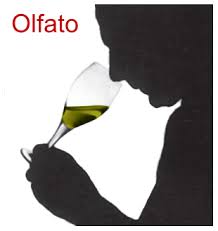The steps of tasting a Rioja wine, to be able to capture and appreciate all the characteristics of the wine, are closely linked to the sensations that it transmits to us in each of the senses.

The steps of tasting a Rioja wine
View
The first captures the color of the wine. Its color tells us the structure of the wine. From there we can draw the following arguments:
So if it’s a dark wine, we’ll know it’s a fleshy wine.
We can also determine the age of the wine. This is whether it is a young or aging wine.
The border that is the part of the wine that touches with the glass, in the young wines presents a violet color. On the other hand, the wines of aging or reserve, have a rim of color tile product of the oxidation that has been carried out in the barrel.
The sense of smell
Inclining the cup with n movement, we get the wine to open, and thus take out its aroma in an easy way.
Initially the aromas can be of 2 types:
Fruit aromas
Aromas of wood product of the barrel (coffee, leather, vanilla)
If the wine is bad, we can also guess by the smell. A bad wine, it smells of vinegar, which gives the name to the “vinegary” concept.
On many occasions this problem is caused by the cork, which has allowed air to pass through. Therefore, many experts before smelling and tasting the wine, smell the cork of the bottle once opened.
Taste. The steps of tasting
Through the mouth we can perceive several aspects of wine
We can detect the degree of acidity, the texture and the degree of alcohol. Our taste organs can identify four types of flavors:
Sweets: depends on the type of grape used and the region where it has been produced.
Acids: associated with the freshness of wine
Bitters: determined by the tannins, and whose perception is the dryness in the mouth.
This flavor is only found in manzanilla wines.
Memory
The sensation left by the wine, after a while, is known as remembrance.
Cup
The ideal glass for each wine, is one of the facets that we must take into account when trying a Rioja. It must also be perfectly clean and contain no residues or residues of any beverage.
Pencil and paper. The steps of tasting
It is important to write down the sensations we perceive. In addition, with the passage of time and reviewing the annotations, we will acquire more knowledge of Rioja wines
White surface
It is the best way to detect the color of the wine, against a white surface. We will contrast its color against a white background. A napkin, a tablecloth, or any other background can be used as a white background.
The place
Where the tasting takes place, it must be a place that meets certain conditions. It must be a place with natural light, if possible. If they do not have natural light, it should be white light, and with sufficient intensity.
It should also be an airy and ventilated place. It will be a dry place without humidity.
With these tips you will get a tasting done in the best condition.